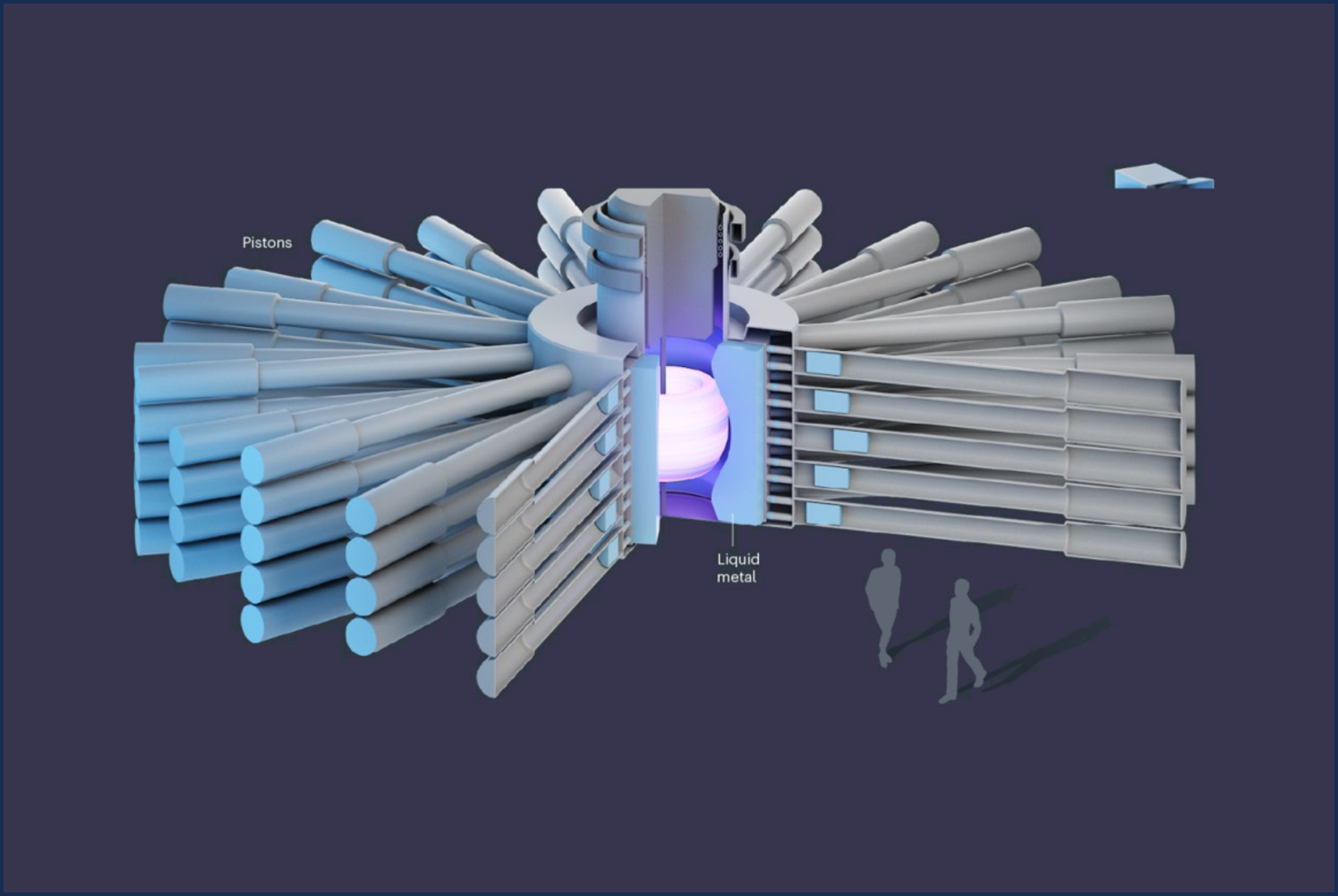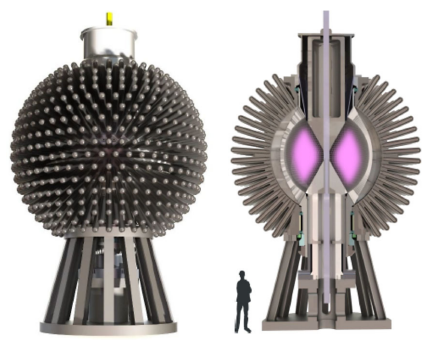Mechanical Plasma Compression

Mechanical magneto-inertial fusion
The magneto-inertial fusion technique uses both magnetic confinement and inertial implosion to achieve fusion. It is employed by one of the big-seven fusion companies: General Fusion
General Fusion is one of the older private fusion companies, formed in 2002, with funding of $300+ million and 200+ employees. Their method is very complicated, with a Magnetized Target technique which is between MCF and ICF in method as well as in plasma density and in confinement time, as shown in the table below from the book of Parisi & Ball.

The review paper by Daniel Cleary, explains the General Fusion method. The machine has a first part consisting of a plasma injector that forms Field Reversed Configurations (FRC) and fires them out at speed into the centre of the second part, a spherical reaction chamber. The chamber contains some liquid lithium which is spun up to coat the inner wall. This serves several purposes: it absorbs the high-energy neutrons produced in fusion reactions, preventing them from damaging the reactor structure; it absorbs the energy of the neutrons and carries it out to be harvested and converted into electricity; and the neutrons convert some of the lithium into tritium, which can be collected and used as fuel for the reaction. The third part of the system provides the compression which implodes the FRC once it reaches the centre of the chamber. It is comprised of up to 400 pneumatic pistons positioned around the reaction chamber like spines on a sea urchin. These slam down in unison to produce a converging shock wave in the chamber centred on the FRC. As with ICF this technique has a long progression in performance. At present the General Fusion prototypes will be able to perform around one shot per day but a working power plant would need to perform one per second. Nevertheless, the company advertise commercial fusion in about 10 years.

Field-reversed configuration. Ring of plasma (blue) which rotates (red arrow) creates magnetic field (green) which helps to confine it.

General Fusion's reactor showing the multiple mechanical pistons to compress the central chamber.
